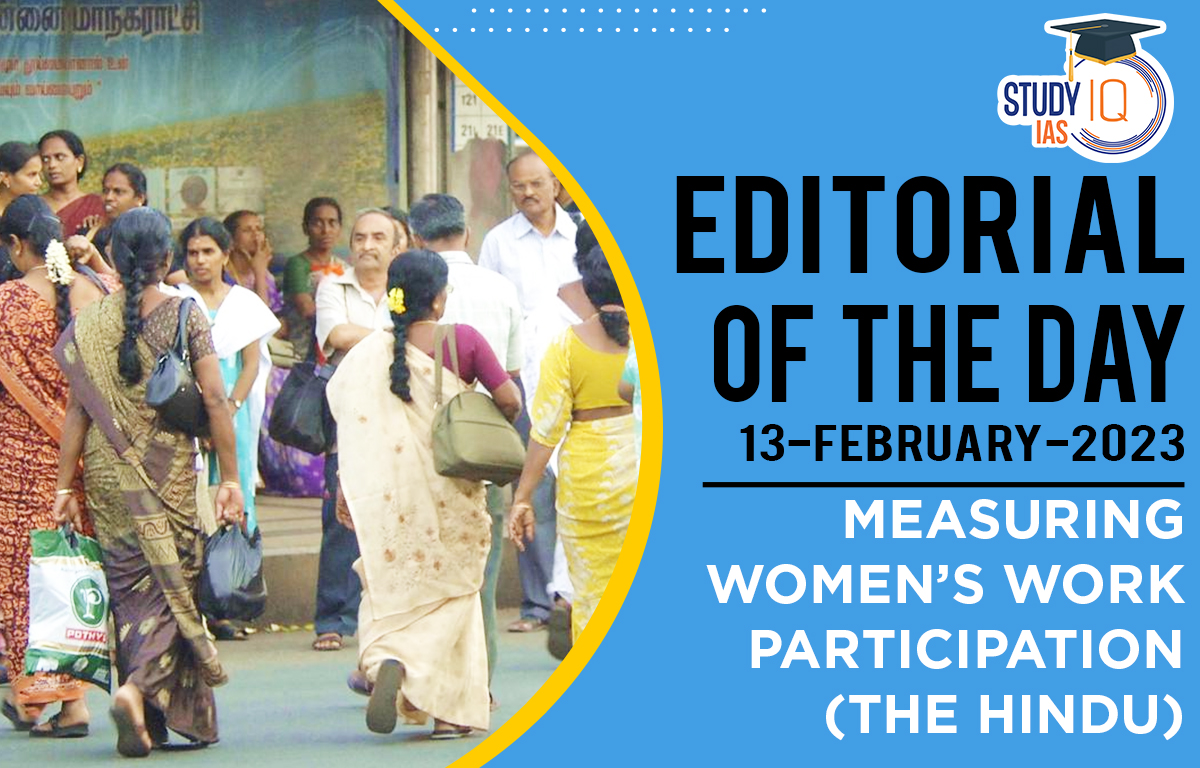Table of Contents
The Economic Survey (ES) 2022-23 has acknowledged that official statistics may have inadequately captured the true nature of women’s work in India.
- This inadequacy has affected how women’s economic contribution is perceived and the policies developed to enhance women’s economic participation.
- The Economic Survey lists three sources of measurement error:
- Using very broad categories that club productive economic activity with domestic unpaid work.
- Asking single-shot questions without trying to categorise women’s work
- Not being able to capture expenditure-saving work that contributes to household wellbeing.
- To eliminate underreporting, Economic Survey recommends revising labour force surveys to bring them in line with methodologies suggested by the International Labour Organization (ILO), listing a pre-defined set of activities.
Understanding Error in Measurement of Women’s Labour Market Activities
- A comparative experiment was conducted by National Council of Applied Economics Research’s (NCAER’s) National Data Innovation Center in 2019 under the Delhi Metropolitan Area Study (DMAS) in NCR.
- This experiment included one-shot questionnaire method followed by the National Sample Survey Organisation (NSSO) in enumerating usual principal and subsidiary activity status.
- It was followed by more detailed questions, where respondents were asked about involvement in a predefined and exhaustive set of activities, along with the time spent in each of these activities.
- Outcome: The results showed an underestimation of women’s work by 5% points following the activity listing method when including work on the family farm/leased-in land, self-employment, and daily wage work.
- There was underestimation to the tune of 16 % points when including livestock care.
- These results were mainly driven by estimates from the rural area, where underestimation was 34 % points, but only 2 % points in urban areas.
Analyzing the Results of Experiment
- Even though it is difficult to generalize all areas in NCR, the results showed deep-rooted challenges in measuring women’s work.
- It showed that interviewers as well as respondents tend to overlook women’s work, particularly work in family-based enterprises.
- While male farmers consider themselves as employed in farming, women farmers consider farm activities as simply extensions of their household duties.
Issues due to Measurement Errors
- Low LFPR: Measurement errors can lead to a focus on the declining labour force participation rate (LFPR) of women with low education rather than on moderately educated women.
- Lack of focus on moderately educated women could have contributed to low LFPR.
- Implications on skill training programmes: Moderately educated Indian women are less likely to engage in farm sector, but at the same time avoid non-manual semi-skilled jobs such as bus driving or masonry work.
- This will have implications on targeting skilling programmes for women in non-traditional sectors.
- Social protection: Measurement errors will have implications for designing social protection measures.
- Undercounting economically active women will result in lesser budgetary allocation for informal women workers.
Recommendations by Economic Survey
- To better measure women’s work, Economic Survey has floated a proposal to expand the definition of what counts as employment.
- It recommends that activities classified as “expenditure-saving” (collection of firewood, fetching water, and preparing atta from wheat, tutoring children and cooking etc) should be recognised as “work” along with “employment” and collect this information through redesigned surveys.
Drawbacks of Economic Survey’s Recommendations
- Production boundary criterion: It brings together activities within and outside of the System of National Accounts (SNA) production boundary where own-use production of goods (growing vegetables or caring for livestock) is considered within the production boundary while tutoring children is beyond the production boundary.
- International practices: International experts have also recommended capturing data on production of goods and services for own use, work for pay or profit, unpaid trainee work, and volunteer activities, but only count production of goods and services for pay or profit as employment.
- Valuing domestic drudgery: Activities undertaken due to a shortage of infrastructure are suddenly seen as being valuable instead of ‘domestic drudgery’.
- By valorising domestic drudgeries, we may treat their vulnerabilities as strengths and fail to acknowledge the lack of access to income-generating activities for women.
Conclusion
- India’s aim of achieving inclusive economic growth and provide avenues of decent work conditions for all workers in line with SDG (Sustainable Development Goals) 8 can only be possible by getting right measurement of women’s economic activities.


 Question Hour in Parliament: Meaning, Ty...
Question Hour in Parliament: Meaning, Ty...
 Daily Quiz 18 July 2025
Daily Quiz 18 July 2025





















